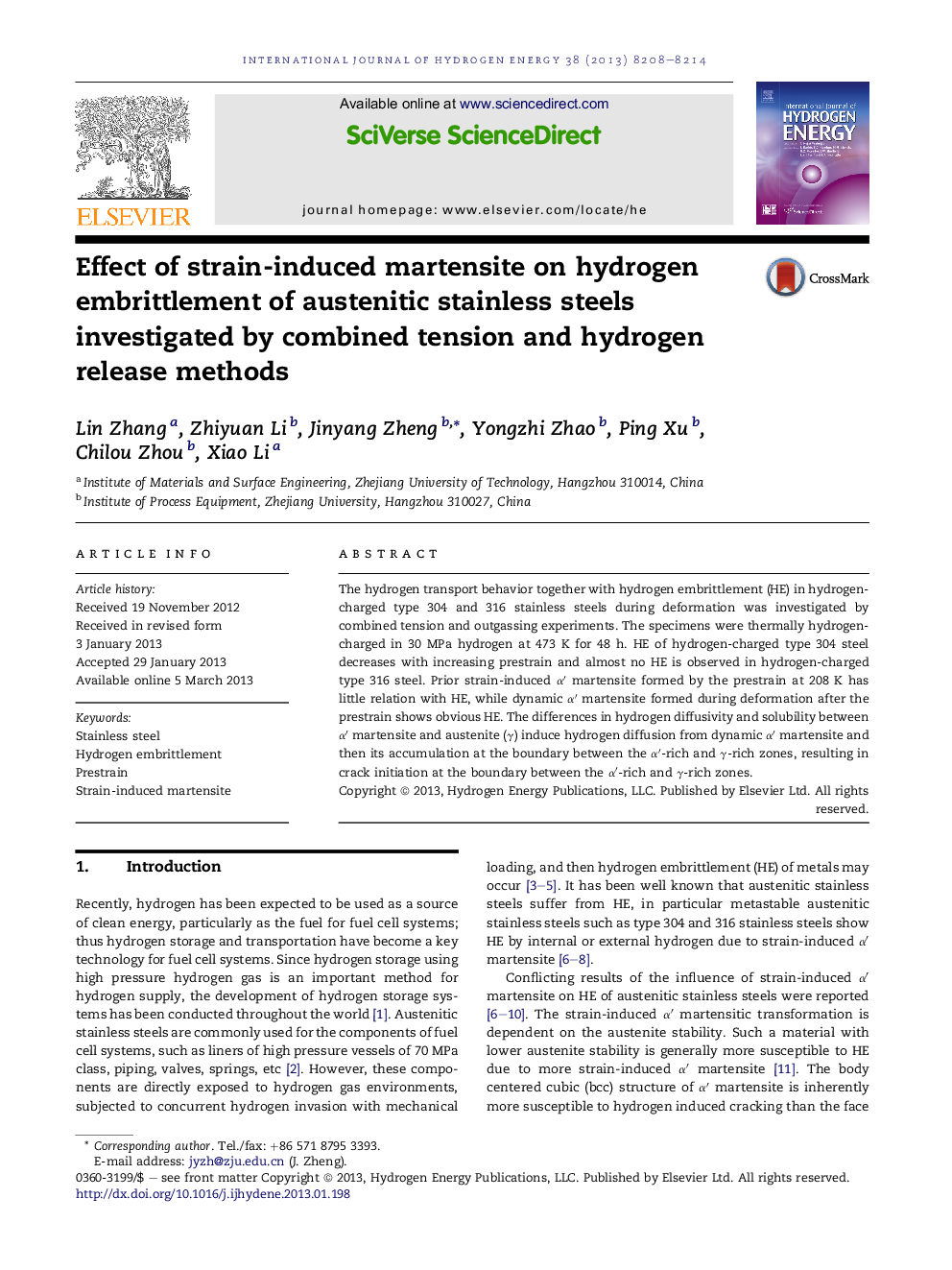| Article ID | Journal | Published Year | Pages | File Type |
|---|---|---|---|---|
| 1273679 | International Journal of Hydrogen Energy | 2013 | 7 Pages |
The hydrogen transport behavior together with hydrogen embrittlement (HE) in hydrogen-charged type 304 and 316 stainless steels during deformation was investigated by combined tension and outgassing experiments. The specimens were thermally hydrogen-charged in 30 MPa hydrogen at 473 K for 48 h. HE of hydrogen-charged type 304 steel decreases with increasing prestrain and almost no HE is observed in hydrogen-charged type 316 steel. Prior strain-induced α′ martensite formed by the prestrain at 208 K has little relation with HE, while dynamic α′ martensite formed during deformation after the prestrain shows obvious HE. The differences in hydrogen diffusivity and solubility between α′ martensite and austenite (γ) induce hydrogen diffusion from dynamic α′ martensite and then its accumulation at the boundary between the α′-rich and γ-rich zones, resulting in crack initiation at the boundary between the α′-rich and γ-rich zones.
► HE of hydrogen-charged type 304 steel decreases with increasing prestrain. ► Prior α′ martensite formed by the prestrain at 208 K has little relation with HE. ► Dynamic α′ martensite formed during deformation after the prestrain shows HE. ► Hydrogen induced cracks initiate at the boundary between α′-rich and γ-rich zones. ► Hydrogen transport and hydrogen content in dynamic α′ martensite contribute to HE.
